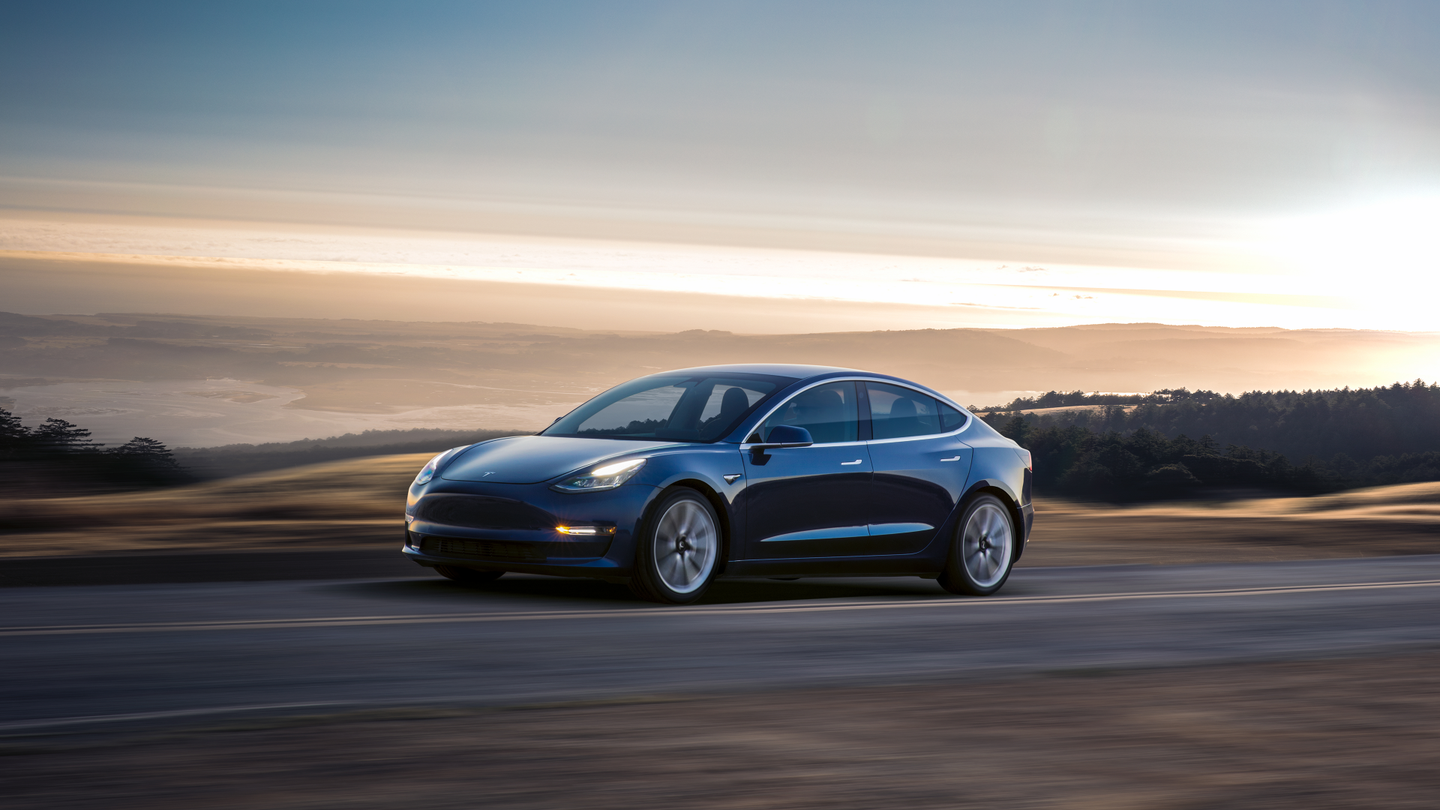Tesla Model 3 Just Achieved NHTSA’s ‘Lowest Probability’ of Injury Ever
The NCAP series of safety tests for new-to-market vehicles has been in place since 1979.

Tesla is no stranger to being on the good side of the National Highway Traffic Safety Administration's (NHTSA) crash test scores. Each vehicle the automaker has released thus far has seemingly ranked above the competition, and the Model 3 is no stranger to that figure. In a detailed statement released Monday by Tesla, the automaker revealed that the Model 3 has been deemed to have the lowest probability of occupant injury than any vehicle ever tested by the NHTSA.
Since 1979, the regulatory body has implemented the New Car Assessment Program (NCAP) which, through a series of tests, ultimately produces a rating for a new-to-market vehicle based on how well it performs in a variety of safety-related tests. Over time the test has evolved to assess the injury to occupants based on data gathered for front, side, and rollover crashes. During the NHTSA's previous tests of Tesla vehicles, the Model S and Model X, respectively, became the two vehicles with the lowest probability for injury, outpacing all other automakers. The Model 3 has now widened that gap as it takes the new number-one position on the leaderboard for the safest overall vehicle for occupants.
The California-based auto manufacturer acknowledges the car's low center of gravity as a major factor in its gracious performance in rollover tests. Similar to The Model 3 places its heaviest component, the battery pack, into the floor, so this helps improve the overall stability and rigidity of the car, making it perform excellently in rollover crashes. Additionally, the automaker gives a subtle nod to its engineering team for their design of the vehicle's crumple zones. Working in conjunction with airbags placed in the front of the vehicle and at the occupant's knees, the Model 3 was able to safely control the deceleration of passengers in frontal crash tests.
Tesla credited the Model 3's safety to a number of physical factors, but also heavily focuses on the software side of its vehicles; something that isn't accessed by the NCAP test. Last week, Tesla released its quarterly safety report which heavily focused on the automaker's semi-autonomous driving suite: Autopilot. The report reads that on average, a vehicle driving with Autopilot engaged has been involved in an accident on an average of once every 3.34 million miles; nearly seven times less than the industry average of once every 492,000 miles. Tesla has previously stated that a driver is "3.7 times less likely" to be in a fatal accident while using Autopilot.
The NHTSA's assessment involved the Model 3 Long Range Rear-Wheel Drive variant, however, Tesla states that it believes other trims will receive similar results when tested.
